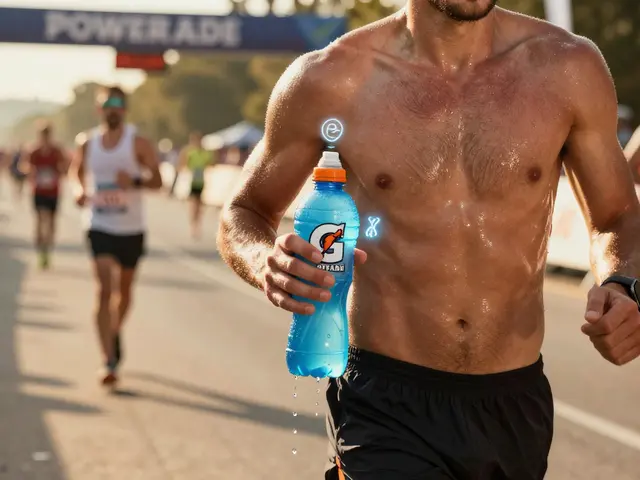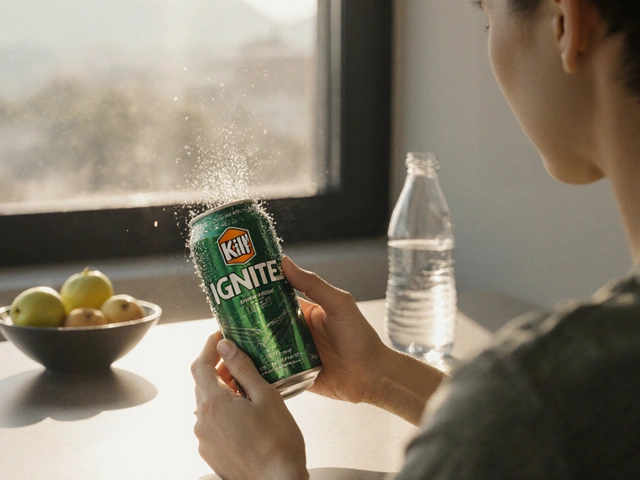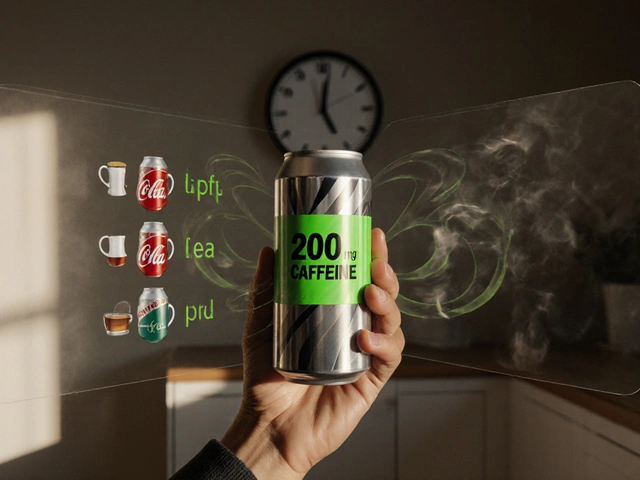Is Prime good for you? A deep dive into the health effects of Prime energy drink
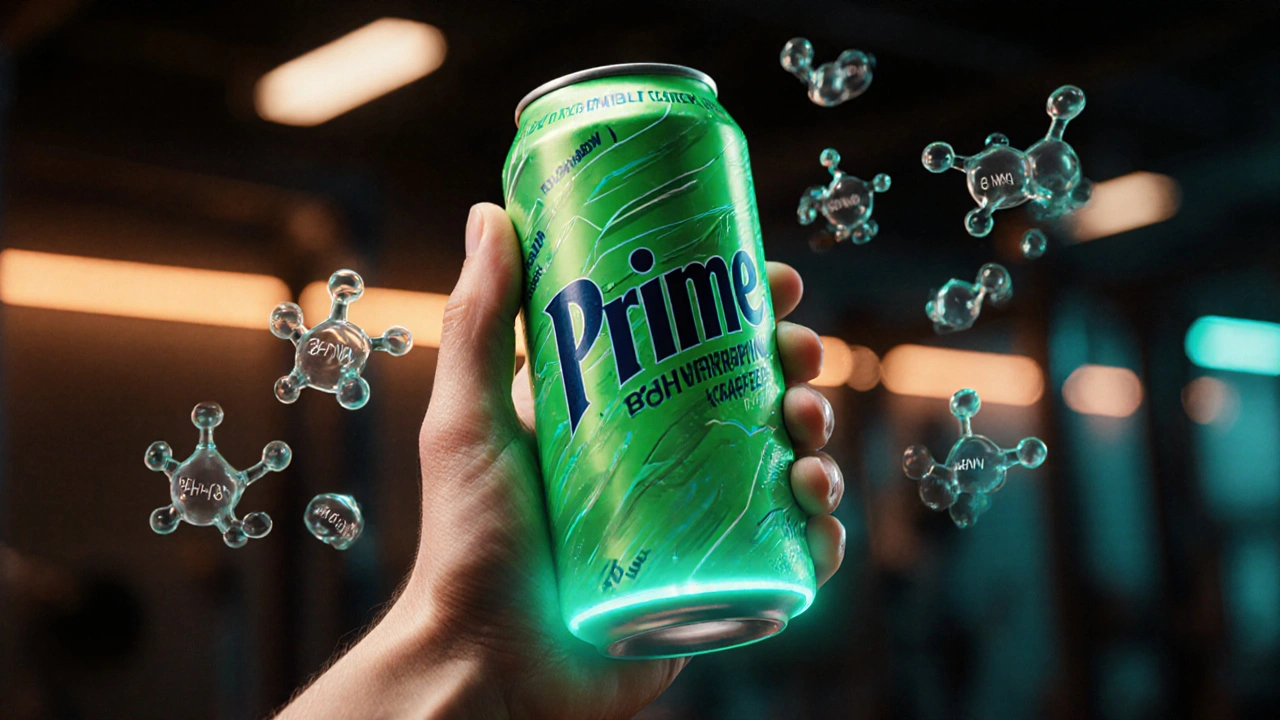
Everyone’s been asking: Prime energy drink is a tasty, neon‑colored boost, but does it actually help or hurt our bodies? Let’s cut through the hype and look at the facts, ingredients, and real‑world health outcomes so you can decide if a can of Prime belongs in your daily routine.
TL;DR - Quick takeaways
- Prime delivers about 200mg of caffeine per 16‑oz can - roughly two cups of coffee.
- Zero‑sugar versions swap sugar for sucralose and erythritol, which are safe for most people but can cause digestive upset.
- The B‑vitamin blend is well below toxic levels, so it’s unlikely to cause a vitamin overdose.
- People with heart conditions, anxiety, or caffeine sensitivity should limit or avoid Prime.
- Moderation (one can per day) and timing (avoid late‑afternoon) keep the benefits without the jitters.
What is Prime?
Prime is a low‑calorie energy drink launched in 2022 by popular YouTubers Logan Paul and KSI. It comes in several flavors, each promising a quick energy lift without the crash often associated with sugary sodas. The brand markets itself as “hydration meets performance,” positioning itself between traditional sports drinks and high‑caffeine energy shots.
Key ingredients and what they do
Prime’s formula is short enough to read on the label, yet it packs a few well‑known stimulants and additives. Below, each core component is defined, its typical dosage in a 16‑oz can, and the physiological impact backed by research.
- Caffeine - 200mg per can. Caffeine blocks adenosine receptors, reducing feelings of fatigue and increasing alertness. Studies show 200mg can raise resting heart rate by 5‑10bpm and improve short‑term cognitive performance.
- Taurine - 1g per can. An amino‑acid that helps regulate calcium signaling in muscles and supports antioxidant activity. Most research suggests taurine is safe up to 3g daily for adults.
- B‑Vitamin Complex (B3, B6, B12) - total 20mg. These vitamins aid energy metabolism, but the amounts in Prime are well below the tolerable upper intake levels, so toxicity is rare.
- Sugar - 2g (regular) or 0g (Zero). The sugary version provides quick glucose, but the amount is low enough to keep total calories under 20 per can.
- Artificial Sweeteners - Sucralose & erythritol (Zero). Both have FDA approval and are considered non‑caloric, though sucralose can cause a mild aftertaste and erythritol may lead to gas in sensitive stomachs.
- Electrolytes - Sodium (150mg) and potassium (30mg). These help maintain fluid balance during exercise, but the levels are modest compared with dedicated sports drinks.
How Prime stacks up against other energy drinks
| Brand | Caffeine (mg per 16oz) | Sugar (g per 16oz) | Calories | Key Additives |
|---|---|---|---|---|
| Prime (Regular) | 200 | 2 | 20 | Taurine, B‑Vitamins, Electrolytes |
| Prime (Zero) | 200 | 0 | 5 | Taurine, B‑Vitamins, Sucralose, Erythritol |
| Red Bull (8.4oz x2) | 160 | 27 | 210 | Taurine, Inositol, Vitamin B12 |
| Monster (16oz) | 160 | 54 | 210 | Ginseng, L‑Carnitine, B‑Vitamins |
Prime’s caffeine is on the higher side for a 16‑oz can, but its sugar load is dramatically lower than most flagship brands. The addition of electrolytes gives it a mild sports‑drink vibe, while the B‑vitamin complex is comparable across the board.
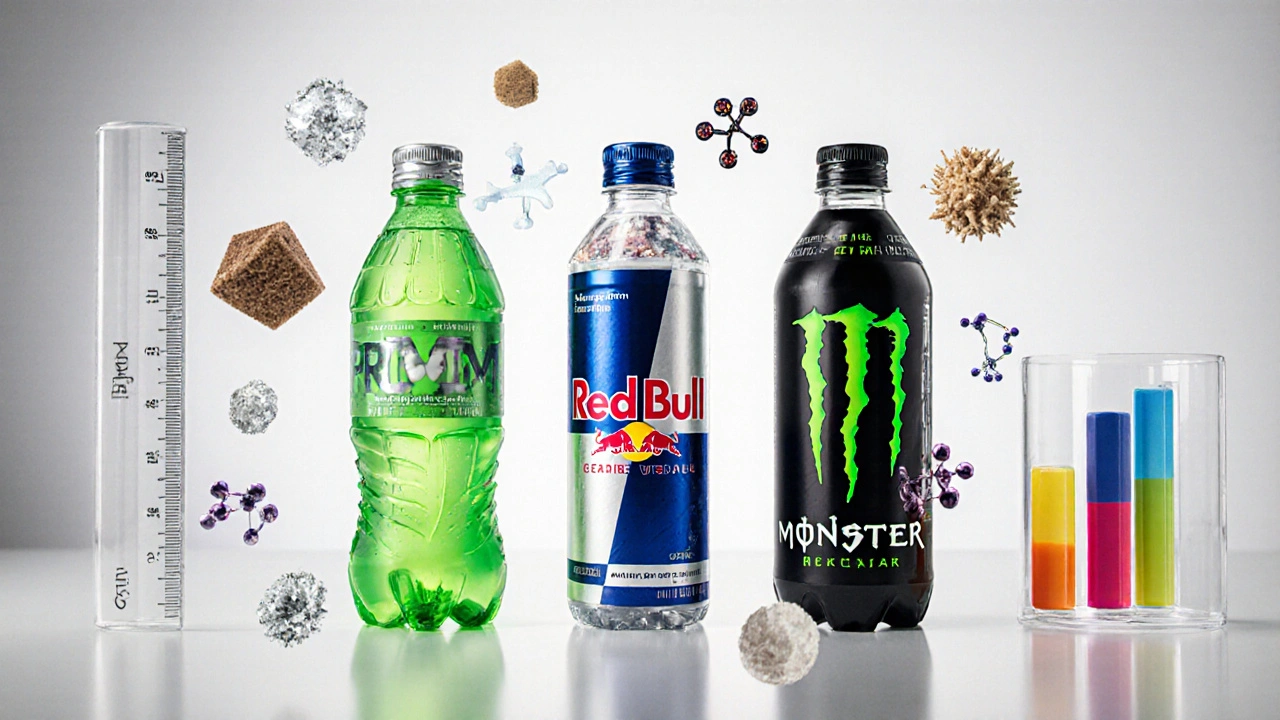
Potential health risks
Even with a cleaner label, Prime still carries the same red‑flags that apply to any caffeinated beverage.
- Heart rate & blood pressure spikes: 200mg of caffeine can push systolic pressure up by 5‑8mmHg in caffeine‑naïve adults. Those with hypertension should monitor their response.
- Sleep disruption: Caffeine’s half‑life is about 5‑6hours. Consuming Prime after 2PM can interfere with REM sleep, especially in shift workers.
- Jitters & anxiety: High caffeine intake amplifies cortisol release, which may aggravate panic‑disorder symptoms.
- Digestive upset: Artificial sweeteners like sucralose are generally safe, but some people report bloating after large doses of erythritol.
- Dehydration myths: The electrolytes in Prime help retain water, but the diuretic effect of caffeine can offset this if you don’t drink enough plain water alongside.
Who might benefit - and who should steer clear
Ideal candidates include athletes or students who need a short, focused boost and can tolerate caffeine. A single can before a workout can improve endurance by 5‑10% according to a 2023 sports‑nutrition trial.
Better to avoid if you have any of the following:
- Diagnosed heart arrhythmia or uncontrolled hypertension.
- Pregnancy - caffeine intake should stay under 200mg per day.
- Adrenal fatigue or chronic anxiety disorders.
- Children under 12 - their bodies process caffeine more slowly.
Tips for safer consumption
- Start with half a can if you’re new to caffeine.
- Pair the drink with a glass of water to offset any mild diuretic effect.
- Avoid mixing Prime with alcohol; the stimulant can mask alcohol’s sedative signals.
- Reserve Prime for pre‑exercise, pre‑study, or early‑day use - never within 6hours of bedtime.
- Track your heart rate for 30minutes after drinking; if it exceeds 120bpm at rest, cut back.
Frequently Asked Questions
Does Prime contain any illegal or banned substances?
No. Prime’s ingredient list complies with FDA regulations for dietary supplements and energy drinks. It does not contain ephedra, DMAA, or other substances that have been prohibited in the U.S. or Australia.
How does the zero‑sugar version affect blood glucose?
Because it replaces sugar with non‑nutritive sweeteners, the Zero version has a negligible impact on blood glucose. Diabetics can generally drink it, but they should still monitor any caffeine‑related spikes.
Can I drink Prime every day?
Occasional daily use is fine for healthy adults, provided you stay under 400mg of total caffeine per day (the FDA’s safe limit). One 16‑oz can of Prime already supplies half of that, so adding coffee or other caffeinated drinks could easily exceed the limit.
Is Prime suitable for kids in sports?
Most health organizations advise against giving any caffeinated energy drink to children. The American Academy of Pediatrics recommends water, milk, or fruit juice as primary hydration for youth athletes.
What’s the best time to drink Prime before a workout?
Consume it about 30‑45minutes pre‑exercise. This window aligns with caffeine’s peak plasma concentration, giving you maximum alertness and reduced perceived effort.
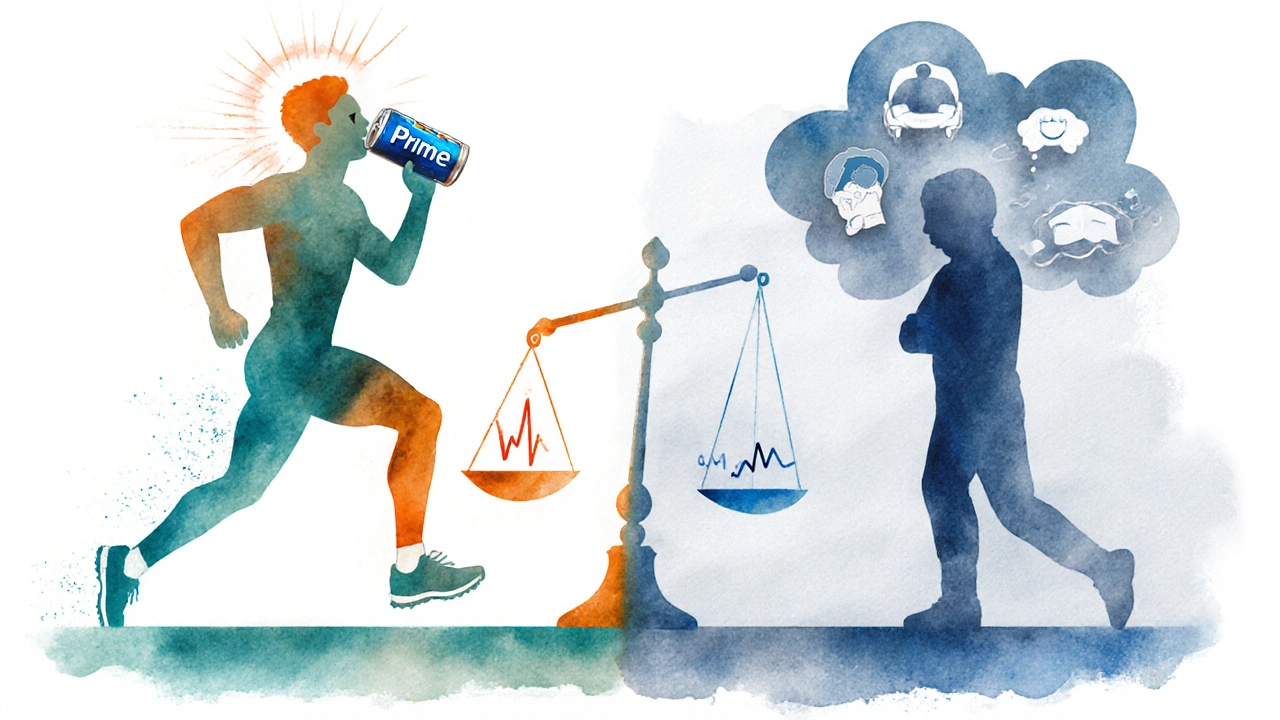
Next steps
If you decide Prime fits your lifestyle, start with a half‑can and note how you feel. Keep a simple log of heart rate, sleep quality, and any digestive symptoms for a week. Should any red‑flag appear-racing heart, insomnia, or stomach upset-cut back or switch to a caffeine‑free alternative such as a coconut water electrolyte drink.
Remember, no single beverage can replace a balanced diet, regular sleep, and proper hydration. Prime can be a useful tool in the right circumstances, but it’s not a magic performance pill.


